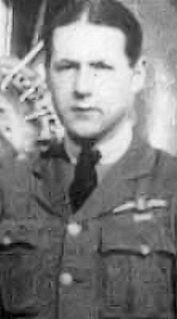Related Research Articles
Robert Kenneth Whitney DFC was a Canadian First World War flying ace, officially credited with 5 victories.

Air vice-marshal Sir Francis John Williamson Mellersh, was a Royal Naval Air Service aviator and flying ace credited with five aerial victories during the First World War, and a senior commander in the Royal Air Force during the 1940s and 1950s. He was killed in a helicopter accident in 1955.

Air Vice Marshal George Roberts Howsam, CB, MC was a Canadian First World War flying ace, officially credited with 13 victories.
Captain Ernest Charles Hoy DFC was a Canadian First World War flying ace, officially credited with 13 victories. He later pioneered airmail flight over the Canadian Rockies.
Captain Ronald McNeill Keirstead DSC was a Canadian First World War flying ace, officially credited with 13 victories.
Captain Hazel LeRoy Wallace DFC was a Canadian First World War flying ace, officially credited with 14 victories. His record shows him to have been a notable team player in squadron tactics.
Lieutenant Harry Neville Compton was a World War I flying ace credited with five aerial victories.
Squadron Leader Charles John Wharton Darwin DSO RAF was a First World War flying ace credited with five aerial victories.
Lieutenant George William Gladstone Gauld was a World War I flying ace credited with five aerial victories.
Captain Earl McNabb Hand was a Canadian World War I flying ace credited with five confirmed aerial victories and two unconfirmed ones.
Lieutenant Harold Arthur Sydney Molyneux was a World War I flying ace credited with five aerial victories. During World War II, he returned to service in the Royal Canadian Air Force.
Major Oliver Stewart MC AFC was a World War I flying ace credited with five aerial victories. Post war, he had a long and distinguished career as a writer.

Lieutenant Hilbert Leigh Bair began his service career as a World War I flying ace credited with six aerial victories.
Captain Henry Gordon Clappison was a World War I flying ace credited with six aerial victories.
Captain Frank Clifton Gorringe was a British World War I flying ace credited with 14 aerial victories.

Lieutenant Kenneth Russell Unger was an American World War I flying ace credited with fourteen aerial victories. His candidacy rejected by his own nation, Unger applied to the British Royal Flying Corps for military pilot training in June 1917. Once trained, he was assigned to the Royal Naval Air Service (RNAS). As the RNAS was merged into the Royal Air Force, Unger scored his aerial victories between 26 June and 1 November 1918. In later life, Unger remained involved in aviation and served again during World War II. He also joined the U.S. Navy Reserves, rising to the rank of rear admiral.
Captain Stanley Stanger was a World War I flying ace credited with 13 confirmed aerial victories scored on the Italian Front. He was also noted for his ingenious escape from being captured by the Austro-Hungarians.
Richard Jeffries Dawes DFC was a Canadian World War I flying ace credited with nine aerial victories.
Captain James Henry Forman DFC was a World War I Canadian flying ace credited with nine aerial victories. He was personally decorated by his king for his valor. After leaving military service in the 1920s, he would return to service in World War II.
Merrill Samuel Taylor was a Canadian flying ace of the First World War. He was credited with seven aerial victories while flying a Sopwith Camel fighter for the Royal Naval Air Service and, later, the Royal Air Force. He touched off the air battle that resulted in the death of the war's leading ace, Manfred von Richthofen, on 21 April 1918. On 2 May 1918, he killed German ace Hans Weiss for his fifth victory. Taylor was killed in action by Franz Büchner on 7 July 1918.
References
Above the Trenches: a Complete Record of the Fighter Aces and Units of the British Empire Air Forces 1915–1920. Christopher F. Shores, Norman L. R. Franks, Russell Guest. Grub Street, 1990. ISBN 0-948817-19-4, ISBN 978-0-948817-19-9.